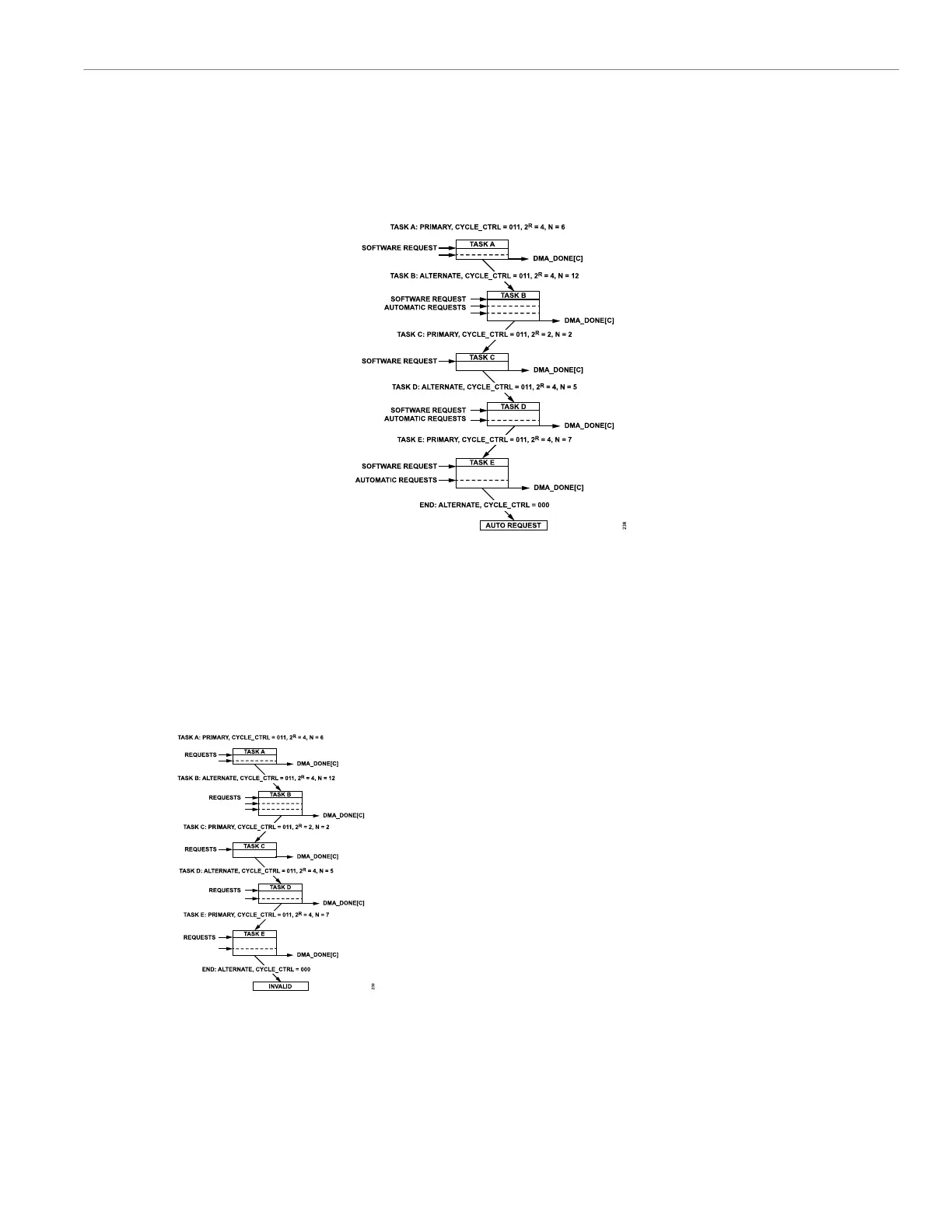Reference Manual ADuCM356
DMA CONTROLLER
analog.com Rev. A | 165 of 312
Software Ping Pong DMA Transfer
(CHNL_CFG, Bits[2:0] = 011)
In this mode, if the DMA request comes from the software, a
request is generated automatically after each arbitration cycle until
the completion of primary or alternate descriptor tasks. This final
descriptor must use an autorequest transfer type. This mode is
shown in Figure 44.
Figure 44. Software Ping Pong DMA Transfer
Peripheral Ping Pong DMA Transfer
(CHNL_CFG, Bits[2:0] = 011)
In this mode, if the DMA request is from a peripheral, the peripheral
must send DMA requests after every data transfer to complete
primary or alternate descriptor tasks and the final descriptor must
be programmed to use a basic transfer type. This mode is shown in
Figure 45.
Figure 45. Peripheral Ping Pong DMA Transfer
Memory Scatter Gather (CHNL_CFG, Bits[2:0] =
100 or 101)
In memory scatter gather mode, the controller must be configured
to use both the primary and alternate data structures. The controller
uses the primary data structure to program the control configuration
for the alternate data structure. The alternate data structure is used
for actual data transfers, which are similar to an autorequest DMA
transfer. The controller arbitrates after every primary transfer. The
controller requires only one request to complete the entire transfer.
This mode is used when performing multiple memory to memory
copy tasks. The MCU can configure all of the tasks simultaneously
and does not need to intervene in between each task. The control-
ler generates the corresponding DMA channel interrupt in the NVIC
when the entire scatter gather transaction completes using a basic
cycle.
In memory scatter gather mode, the controller receives an initial
request and then performs four DMA transfers using the primary
data structure to program the control structure of the alternate data
structure. After these transfers are completed, the controller starts
a DMA cycle using the alternate data structure. After the cycle com-
pletes, the controller performs another four DMA transfers using
the primary data structure. The controller continues to alternate
between using the primary and alternate data structures until the
processor configures the alternate data structure for a basic cycle
or the DMA reads an invalid data structure.
Table 194 details the fields of the CHNL_CFG memory location
for the primary data structure, which must be programmed with
constant values for the memory scatter gather mode. This mode is
also shown in Figure 46.

